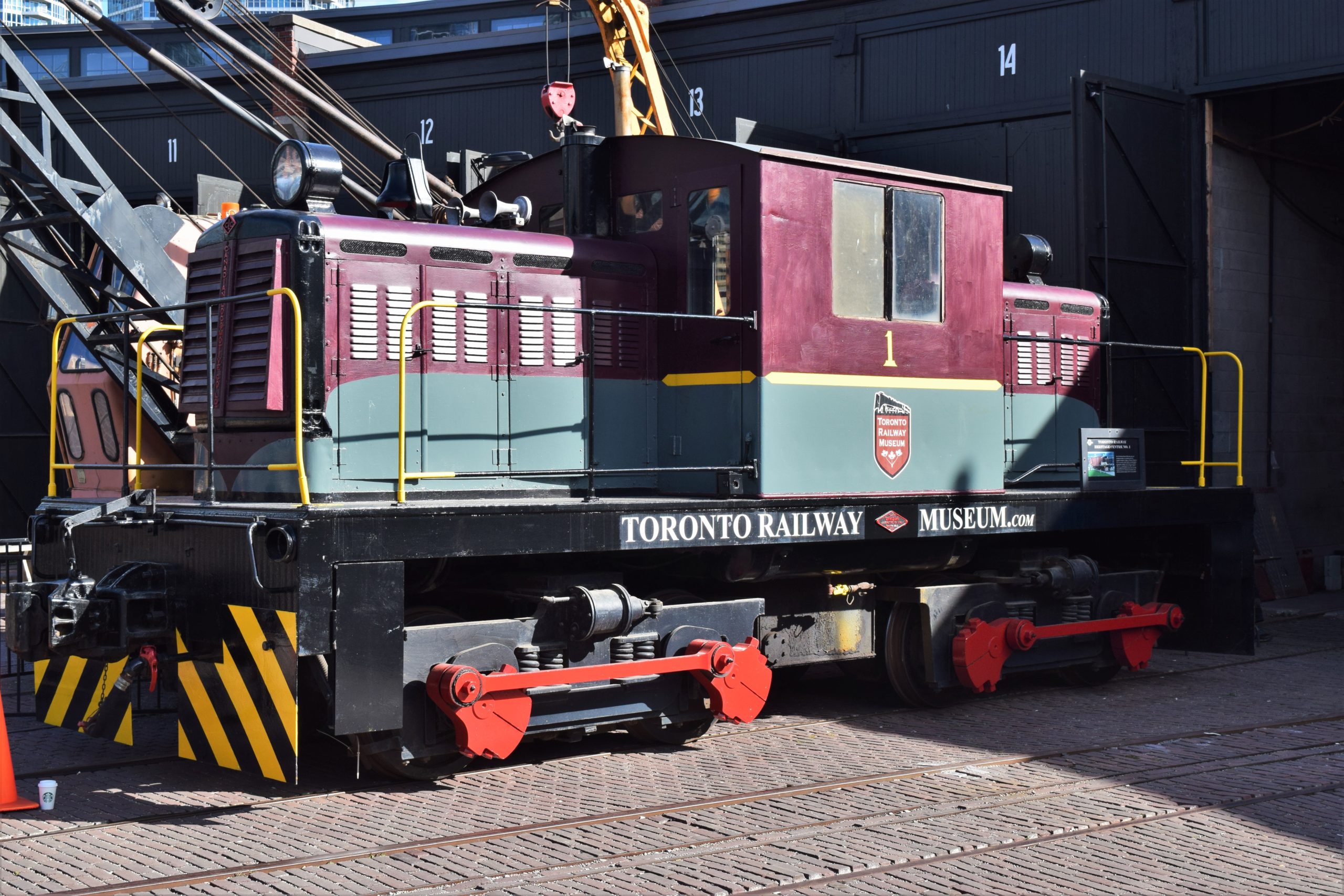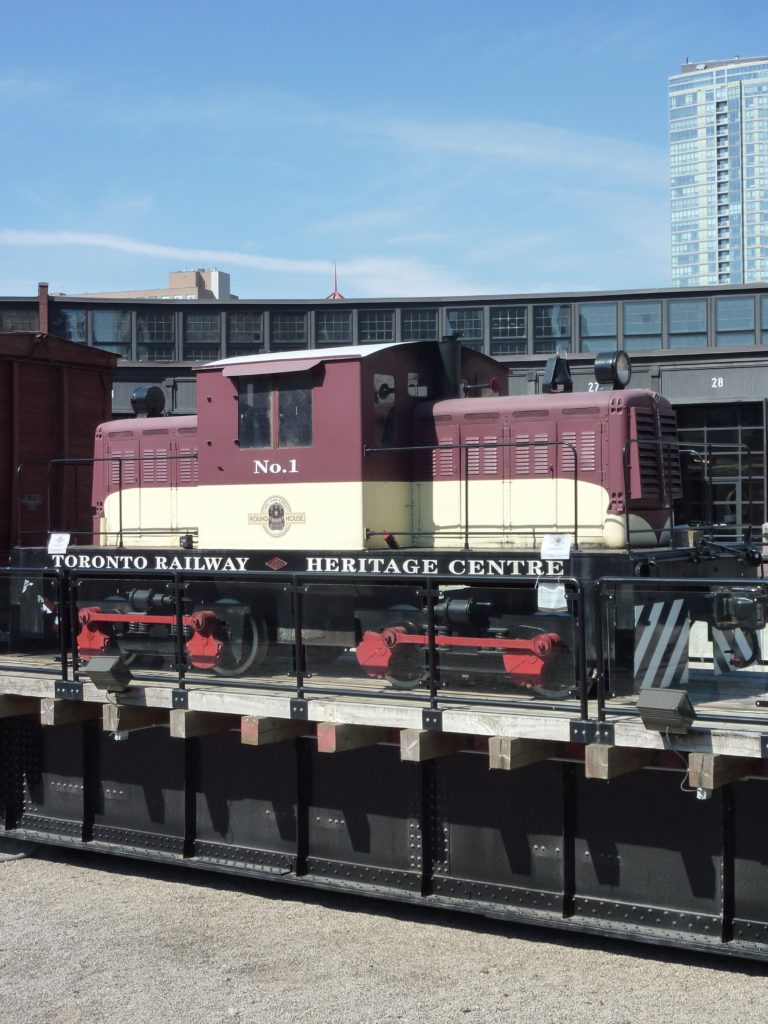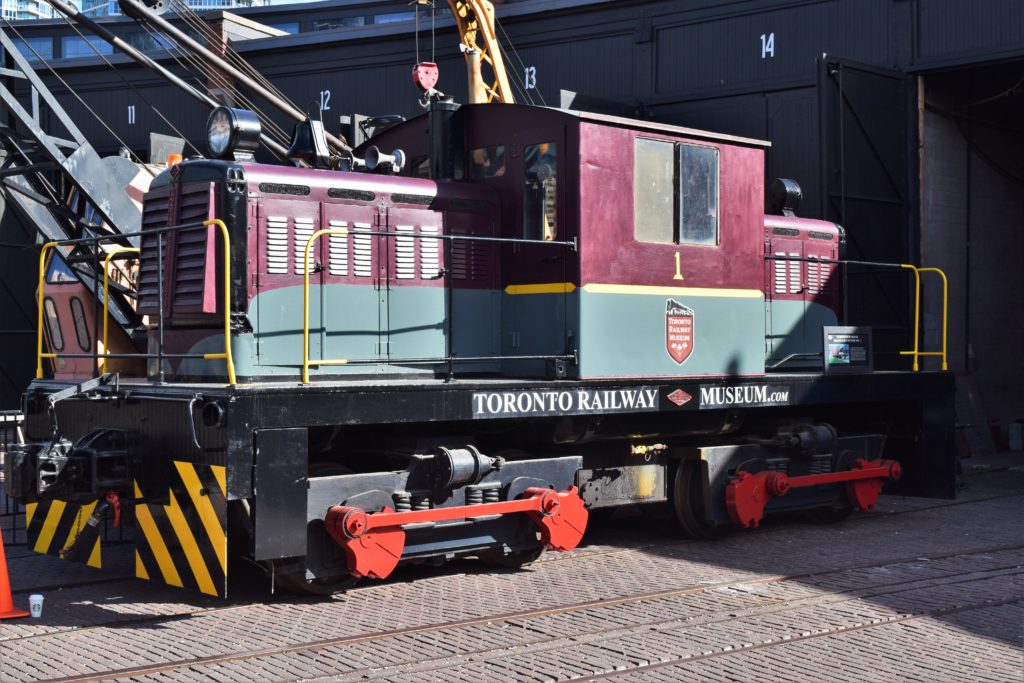This 50 Ton Diesel-Electric Whitcomb center-cab switcher is the workhorse at the Toronto Railway Museum. After acquiring it in 2007, our teams of volunteers brought its two diesel engines back to operational status. Since this is the first locomotive specifically acquired for operation at the Toronto Railway Museum, it received the number 1.
The locomotive has been repainted in the attractive colours of the Toronto, Hamilton & Buffalo Railway, a “fallen flag” railway company whose engines regularly called at John Street throughout the Roundhouse’s life as a passenger steam and diesel locomotive facility. The paint scheme also compliments the fully restored TH&B caboose that that is also part of the Museum’s collection. Since the engine was never actually associated with the TH&B, it is decorated with the new logo of the Toronto Railway Museum.
It proved itself invaluable in moving rolling stock and engines out of the Roundhouse to allow for restoration of the building to proceed. Since then, it has operated many times every year when there is a need to move other engines and rolling stock around the park and into and out of the Roundhouse’s three restoration bays.
History
The locomotive is a 50 Ton Diesel-Electric Whitcomb center-cab switcher. It was manufactured by the Canadian Locomotive Company in 1950. The CLC was located in Kingston, Ontario and the switcher was No. 2637 of a total of 3064 steam and diesel locomotives built there between 1854 and 1968. The unit was manufactured under license from the Whitcomb Locomotive Company in the U.S., a subsidiary of the Baldwin Locomotive Company of Philadelphia, Pennsylvania.
The locomotive was sold to Limestone Products on February 6, 1952 for $43,000 plus tax. The Whitcomb was to be delivered within ten days from Kingston to the Limestone quarry in Scarborough, where it was used in industrial switching service for the next quarter century. In 1977, the engine was sold to Nelson Aggregates, an aggregate mining and construction materials supply company with various locations in southern Ontario.
Nelson Aggregates leased the diesel to the York-Durham Heritage Railway between 1994 and 1997, where it was used in work train service rebuilding the track between Stouffville and Uxbridge, Ontario. In 1997, the locomotive was leased to the Prince Edward County Railway Preservation Society and moved to Picton, Ontario, then moved to Trenton in 2000, where it remained until it was acquired by the Toronto Railway Museum in 2007.
At that time, the Toronto Railway Museum needed a compact switching engine that was sufficiently powerful to move the largest locomotive in the collection, the giant Canadian National Railway steam locomotive No. 6213, which was stored at the Canadian National Exhibition Grounds and subsequently moved to Roundhouse Park. The switcher’s move to Toronto was contracted to Western Mechanical, the company that restored the John Street Roundhouse turntable bridge in Barrie and re-installed it the turntable pit in late 2007.
In addition to its utilitarian value in roundhouse switching service, the Toronto Railway Historical Association has determined that the locomotive constitutes a valuable heritage artifact in its own right.
The engine is typical of the thousands of locomotives manufactured for industrial switching purposes in North America and was used in several locations throughout southern Ontario, including Toronto.
The switcher is also a product of the Canadian Locomotive Company, the most important manufacturer of railway locomotives in Ontario throughout the first half of the 20th century.




